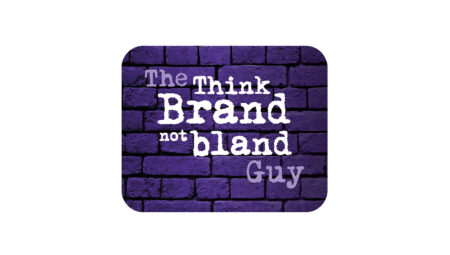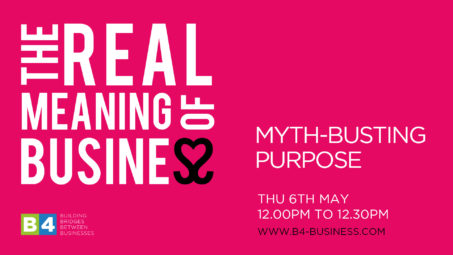
What keeps you awake at night?
Every day there are hundreds, if not thousands, of articles, discussion groups, blogs and tweets about what responsible businesses need to focus on now. There are almost as many new and diverse viewpoints, buzzwords, emphases, job titles, groundbreaking initiatives, self-help for leaders and new management structures, as there are businesses.
Things can be catastrophically complex…
Everyone seems to differ in their view about what businesses need to focus on most – culture, social responsibility, technology, processes, value, operations, diversity, consolidation, acquisition, capabilities and talent, strategy, tactics, tactics dressed up as strategy, customer experience, customer centricity, data, blah, blah, blah. Everyone differs again when trying to define the best new ways to address each of these.
In the clamour to try and deal with issues that have no precedent in terms of complexity, multiplicity, scale and speed, everyone is trying to invent new ways to address ‘new’ issues.
“All that’s happening is that a Gordian knot is being tied around dynamic visionary thinking, robust strategic and tactical thought and action, cohesive planning, and efficient development”.
In reality of course, there is a common reason for all this noise. It’s change… or transformation… or evolution… or revolution… (insert Blah’s here). Everyone knows it’s imperative, everyone’s wrestling with what to do and no-one knows how to deal with the magnitude of it, the pace of it or what to focus on first.
Everyone, with woefully few stellar exceptions, seems to be making the same mistake by looking at the change to a new business paradigm with old paradigm thinking. The same siloed vested interests that beset organisations in the past are besetting the diligent definition of their changed future. The results of all this are plain to see – at the critical moment of change opportunity, 77% of organizational re-designs fail (McKinsey).
The resulting crises of confidence and reversal of leadership and cultural forward motion, risks compromising every facet of future decision-making and implementation efforts to create diligent, necessary and beneficial change.
Stop reaching for the latest idiot’s guide to business.
If we all stop waving our arms around frantically, panicking and then reaching for the latest idiot’s guide to business change in the hope of finding new revelations, and take stock for a while, we may realise that the issues now have all been faced before, continuously, by businesses everywhere, for as long as there have been businesses, customers, technologies and the need for competitive advantage.
The reality is that there has always been change and the need to either lead or respond to it. There have always been the advantages and risks of adopting new tech, creating new cultures, innovating changed propositions, re-discovering advantage over existing and new competitors, finding better ways to work/places to work/types of capability, finding new ways to communicate and sell, finding new values and, most critically, identifying the things that will drive customers to you and keep them there.
“Just because this is YOUR first paradigm shift doesn’t mean it’s THE first paradigm shift”.
The difference now is pace, however pace of change is something that business leaders can control with prudent, strategic change need evaluation, visionary thinking and well-constructed and cohesive implementation – and, critically, by stepping away from the idea that technological change is the driver for all other change requirements. By (temporarily) losing technology from the debate, organisations can focus in better on what they need to be and do, then define the technology required to do it… and the culture, capabilities, propositions, infrastructure, operation…
Things can be astonishingly simple.
There has always been one discipline that when engaged with fully can bring all of the various components described above together, in the right way, in the right order and with the right shared understanding and development. It’s a discipline that creates purpose, cohesion, motivation, strategic focus and tactical prudence.
It’s always been a change agent and catalyst and has always had equal understanding of the internal and external requirements of people, all people, everywhere. It’s always been the glue that binds organisations together whilst creating the continuous opportunities to evolve. And it’s been the key informer for every function within an organisation. In many success stories, it is the number one driver to ongoing, long-term growth and reward.
This discipline sounds too good to be true and yet its always been there. Unfortunately, by its very nature, it is a strategic discipline that has been greatly and sometimes deliberately misunderstood. Above all other business disciplines, its place in an organisation has been open to considerable debate – and it has been misplaced, misused and mistreated. It has been trivialized and in some organisations, de-valued to the point of non-existence, and yet it is the discipline that can be the answer to almost all questions being asked by concerned leaders debating change – if it’s engaged with properly.
“It is also the publicly accepted number one consideration of citizens, customers, buyers, talent, investors, fans, voters, commentators, bloggers – in fact everyone”.
Because of this, it can be the most powerful asset or the most damaging problem for organisations of all scales and landscapes and it should certainly be the driving concern for every part of an organisation because every part represents it internally and externally.
This discipline is, of course, Brand Strategy. Not Branding, ‘the colouring in dept’, the ‘logocops’, the image department or a subset of marketing or customer services or sales or a random design consultant or the propositions/product development team or the whims of the MD or the skewed view of brand offered by advertising and digital agencies – “We do Brand” or rather “We do brand… as it applies to advertising, digital [insert niche focus here]”.
“Today’s reality is that leaders who are debating all the various ways that they can define and implement rigorous change, need something that will be non-partisan, non-compartmentalised, utterly objective and not owned by any one stakeholder group.”
Brand Strategy done well is not influenced by a few drivers, it has to be influenced by, and therefore influence, the whole organisation and its markets. It’s only in this way that it can achieve the vital statistics that are necessary to justify the role. I would argue that Brand Strategy has to be the high watermark of visionary strategic thinking in today’s and tomorrow’s organisations.
So, to reduce the complexities described above, to create clarity and to avoid the siloed ‘old paradigm’ thinking that destroys successful futures, make Brand Strategy your start point on the road to change.
Life is much more simple, clear, defined and complete this way.
Stephen Cook, Strategist and Optimist at V. Purposeful Strategy
V is a strategy practice. Simple. We help organisations to stand for something vital as they define their future place and their reason for existing.
We inspire them to make common cause with everyone they interact with and to create and implement the organisation-wide strategies that will make their ambitions a lasting reality.
More in Branding

Let’s talk turkey!
Hot off the press – some topical food for thought with a distinctly seasonal flavour and certainly something for businesses to chew over and digest to ensure that they keep abreast of the latest thinking in branding and have a tried and tested recipe for success that isn’t bland for the new year ahead.
By PHIL STRACHAN – The Think Brand not bland Guy

Interview with John F Kennedy, Brand Expert (amongst other things!)
In this edition of the B4 Podcast, B4’s Richard Rosser chats with the man behind the B4 name, John F Kennedy.

Oxford Bus Company ‘Brand the Bus’ finalists announced
The public vote for the latest Oxford Bus Company’s ‘Brand the Bus’ competition has now closed and ten good causes have been nominated for the grand finale.
From this author

Myth-Busting Purpose
In this episode of The Real Meaning of Business, Sam Kandiyali and Steve Cook are joined by Andy Green as they tackle some of the myths surrounding purpose and meaning in business.

Myth-Busting Purpose
In this episode of The Real Meaning of Business, Sam Kandiyali and Steve Cook are joined by Andy Green as they tackle some of the myths surrounding purpose and meaning in business.

The noble art of selling
No matter whether I’ve been studying conceptual and critical thinking or working with global tech enterprises, or with relatively simple businesses, or with organisations dealing with profound social challenges, or with the institutions that claim to represent us in Government, Education, Healthcare provision and Justice, or with those that want to find better ways for us to work and live and interact with each other, or in my work with movements and coalitions for change who are looking at massive subjects like climate change, the future of business, work, consumerism, capitalism, democracy or even society itself, I keep coming back to the same two basic concepts

